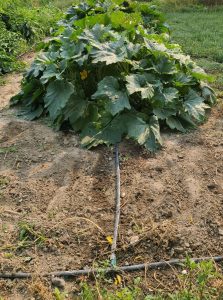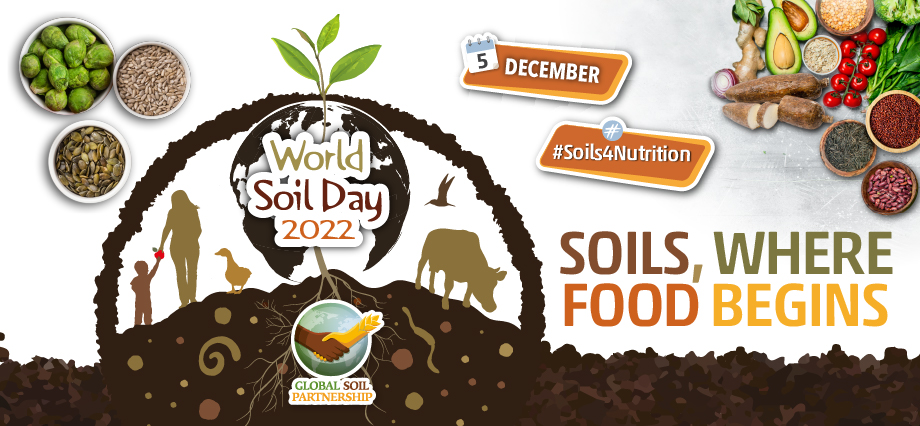Emilee Severe, PhD Student, Lancaster Environment Centre
e.severe@lancaster.ac.uk Twitter:@EmileeSevere

If you look out the kitchen window at my parent’s home you will see my mother’s pride and joy (and no it’s not me) it is a small patch of soil, her garden. As a growing girl, I spent hours in that garden, making rows, planting seeds, supporting my mother in her endless war against the weeds and of course the culmination of our summer’s labour, harvesting. I can remember small changes my parents made over the years to improve our bounty. As a little girl, I can vaguely remember using raised soil beds for the carrots. Then we moved to planting everything in ridges and furrows. Later, to suppress the weeds, we added grass clippings around the borders of the garden. I remember my dad creating all sorts of cages, stringed lines and stakes to help the tomato plants grow tall and fruitful.
Although, the biggest change I remember is when my parents abandoned the sprinkler and started irrigating the garden with t-tape. T-tape or drip irrigation tape is a thin plastic hose with tiny holes in the bottom, which allows water to slowly drip on plants. From that point on, there were no panicked cries exclaiming we forgot to turn off the sprinkler. There was a dramatic decrease in weeds growing between the rows of vegetables and we used less water to irrigate our garden. Soon after geotextile fabric was laid down around the zucchinis (courgette), cucumbers and pumpkins to help the soil retain moisture and of course to get rid of those dang weeds! These changes were welcomed by everyone as it meant less time in the garden and more time for other things.
Globally farmers are also adopting plastic products for the same reasons my family did. Many agricultural plastic products, such as plastic mulch film, reduce the amount of pesticides and water that farmers need to put on their crops [1-2]. Additionally, plastics can increase the growing season and crop yields while also decreasing food loss and fertilizer use [1-2].
With all these wonderful benefits, using plastics brings a new change that I did not recognize as a growing child, microplastics. I would guess the majority of people reading this blog have seen news stories or documentaries about plastics in the ocean, but what about microplastics in the soil? What are these plastics doing to our soils and how are they moving from our land to the water? Will there be a point where the negative effects of microplastic outweigh the benefits of plastics in agriculture?
At the moment, we don’t have a lot of answers to these questions and initial research is showing the effects of microplastics on soil depends on location, crops, farming practices and of course the soil itself [3-5]. Although, we cannot allow this lack of understanding to overshadow what we do know. We know that microplastics in various quantities are very harmful for both aquatic and terrestrial animals. We know that microplastics move in the environment6,7. We also know we can reduce the amount of microplastics in our farmlands and urban centers by first replacing plastics with non-plastic products where possible, reusing plastic products and finally recycling and properly disposing of plastic waste. Plastics do so much good in our world especially in agriculture, yet the microplastics they shed are harmful.
1. Cusworth, S. J., Davies, W. J., McAinsh, M. R. & Stevens, C. J. Sustainable production of healthy, affordable food in the UK: The pros and cons of plasticulture. Food Energy Secur. n/a, e404 (2022).
2. FAO. Assessment of agricultural plastics and their sustainability: A call for action. 160 https://doi.org/10.4060/cb7856en (2021).
3. Liang, Y., Lehmann, A., Yang, G., Leifheit, E. F. & Rillig, M. C. Effects of Microplastic Fibers on Soil Aggregation and Enzyme Activities Are Organic Matter Dependent. Front. Environ. Sci. 9, 97 (2021).
4. de Souza Machado, A. A., Kloas, W., Zarfl, C., Hempel, S. & Rillig, M. C. Microplastics as an emerging threat to terrestrial ecosystems. Glob. Change Biol. 24, 1405–1416 (2018).
5. Schöpfer, L. et al. Microplastics persist in an arable soil but do not affect soil microbial biomass, enzyme activities, and crop yield. J. Plant Nutr. Soil Sci. (2022) doi:https://doi.org/10.1002/jpln.202200062.
6. Rehm, R., Zeyer, T., Schmidt, A. & Fiener, P. Soil erosion as transport pathway of microplastic from agriculture soils to aquatic ecosystems. Sci. Total Environ. 148774 (2021).
7. Brahney, J., Hallerud, M., Heim, E., Hahnenberger, M. & Sukumaran, S. Plastic rain in protected areas of the United States. Science 368, 1257–1260 (2020).
Recipe: Zucchini Brownies
Now as I have been writing this post my parents have texted yet another picture of their harvest bounty. So it seems only natural that I should share the recipe for one of my favorite harvest treats, zucchini brownies. Do you think this can count as one of my 5-a-day?
Recipe credit: My neighbour, Joni Burtenshaw
Ingredients
2 c. shredded zucchini
1/3 c. cocoa
½ c. chopped nuts
1 tsp. Salt
2 tsp. vanilla
2 c. flour
½ c. oil
½ c. sugar
1 tsp. baking soda
2 eggs
Method
Mix in order given and bake in a greased 9 x 13-inch pan at 175 degrees C for 30 minutes.
